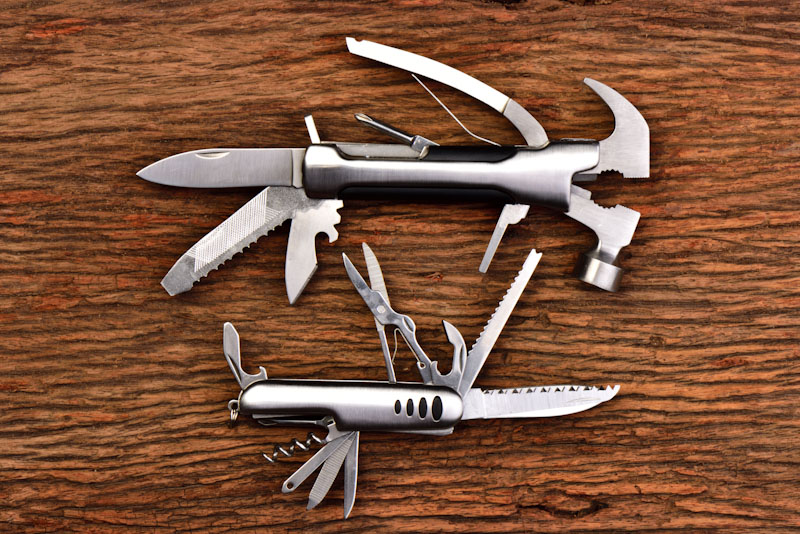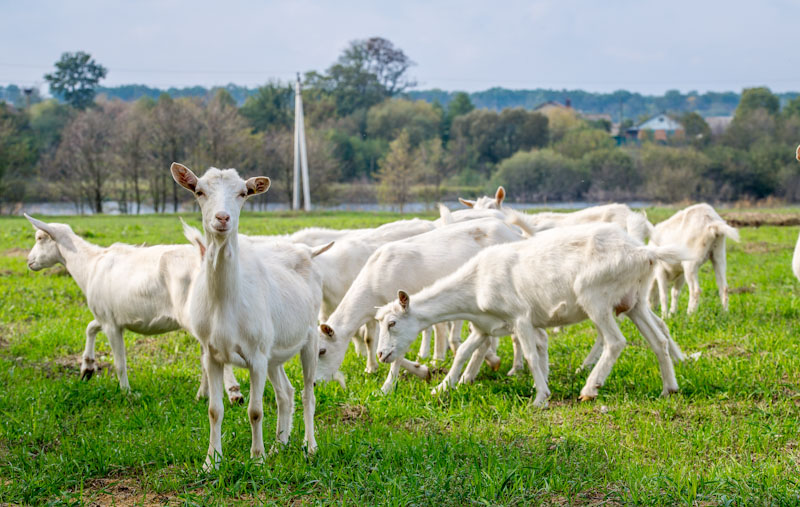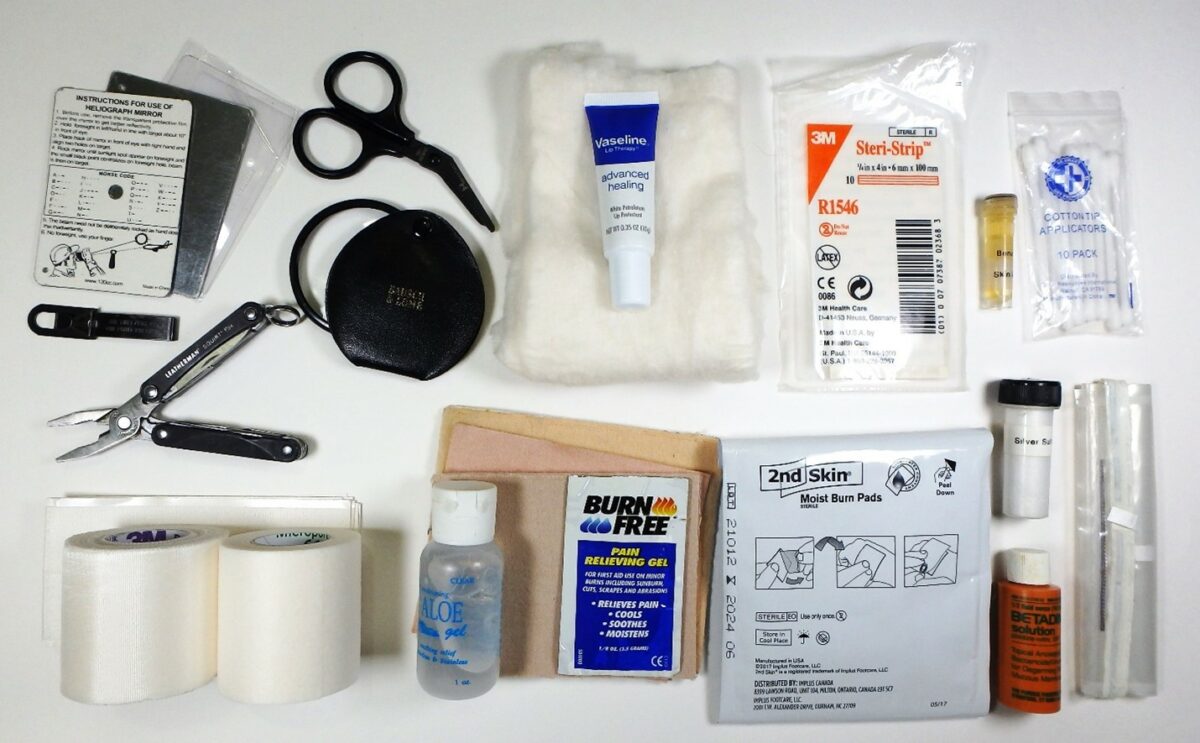Many people trapped in place, as well as those evacuated from the recent hurricanes found that they were unable to care for their pets. In case of emergency, millions of pets are injured, abandoned, or lose their lives because their owners haven’t made a plan for their survival.
While human life is always important, you can still increase the odds of your pets surviving and thriving in both short and long term disaster scenarios.
Here are 10 essentials you should have assembled into a bug out bag or kit so that you and your pet will always be ready for any situation.
Food and Water
Unless your pet is on a very special diet, you should try to put together some extra food and water. For example, if you have a smaller animal that doesn’t eat much, it may not take much work to store away a few extra cans of food, or a small bag of dry food.
If you have a much larger animal that eats several pounds of food in just a few days, then you need extra planning. Since there are no nutrition dense MREs for animals, you will need to figure out a way to do what you can with a relatively limited food supply.
Here are some things you can do to feed your pet more easily during a major crisis.
Rely on Food Scraps
Introduce as many table scraps and other human foods as you can into your pet’s diet, but make sure that you don’t feed the animal foods that are poisonous to them.
There are several good lists online that will tell you what foods to avoid feeding animals based on their species. Contrary to popular belief, the biggest problem with feeding your pet human based foods is that their digestion gets accustomed to a specific kind of food.
When you make sudden changes, your pet may experience diarrhea or other problems that will pass once they adjust to the new food. The wider the selection of foods you feed your pet now, the better chance they will have of remaining healthy and strong when their own food is unavailable.
Once you are confident that your pet is accustomed to consuming human foods, you can pack similar foods for you and other humans that will be travelling with you.
Take into Account Caught Food
As with any other kind of food, the more chance your pet has to adapt to the different food types, the less risk they will have of developing digestive problems.
Giving your pet some human foods or hunted ones, and then stop and go back to feeding just commercial foods won’t be simple. As with your own body, conditioning for consuming different foods must be maintained by continually eating as much variety as possible.
Test if MREs work for Your Pet
If you are focusing mainly on MREs or other nutrient dense foods, make sure they are safe for your pet first. Remember that even humans can experience severe intestinal and other digestive problems because of the reduction in water content in these foods.
You may need to mix these foods with more water before feeding them to your pet, or find some other way to ensure they do not cause a serious medical problem.
Blankets and Bedding
Aside from providing a sense of security, blankets and bedding will be important for keeping your pet healthy. Whether it’s cold, or your pet gets wet, blankets and bedding can be a lifesaver.
Get your pet used to emergency blankets and other variants that you may have packed for your own use, since it would be easier to share these items with your pet if they are already accustomed to them.
Restraining Devices
Unless you are planning to bug out with a fish or some other animal that cannot live in open air, then you’ll need some kind of restraining device to keep your pet safe and under control at all times.
Even if your cat, rabbit, rat, ferret, chinchilla, or other mammalian pet usually travels in a carrier, you should also have a leash and harness available.
Cats can easily slip out of a collar, and given that most dislike leashes, you’ll need the harness for times when your cat needs to be out of the carrier.
If you have a dog, you may believe a collar and leash or a harness are enough of a restraining device.
But if you must stay in a shelter, or a rescuer will have to help you evacuate, a dog on a leash can be much harder to handle than one sitting in a carrier.
Your pet will be very stressed out by the situation, and if they are not used to so many strangers on top of everything else, it can spell disaster for you and anyone the dog encounters. It is best to have a carrier available so that the dog has a safe sanctuary and can also be handled with ease.
If your dog is too big, you should have a blanket or something else on hand that is large enough to wrap the dog up in. In an emergency situation where the dog is going to be in tight quarters, it will give you much better control than trying to work exclusively with a harness or collar.
Also, many dogs (and cats) calm down almost immediately when wrapped up in a blanket, which will also make transporting the dog in strange or close quarters a bit easier.
If you are trying to transport birds, make sure their flight feathers are properly clipped. As with cats, even though you may intend to transport birds in their cages, it is still very important to have a leash and harness. Be sure that your pet is comfortable with these devices so that they can have some time out of the cage.
Ownership and Vaccination Records
With so many fires, hurricanes, and other natural disasters, you may wind up travelling across state lines in an effort to find safety. Also, if pets are going to be accepted in a nearby shelter, you’ll need to provide documents showing that your pet is vaccinated for rabies. that’s why you have to keep ownership and vaccination records in your pet’s survival kit.
While reviewing your pet’s vaccination records, ask about vaccination requirements to go across state lines, as well as for other states where your pet may travel. Make sure that you know all of the vaccination requirements for each state where you may go, as well as ones where you may be travelling through.
Many people don’t realize that laws surrounding specific pet breeds are getting as bad as gun type and accessory limits. You may own a pitbull that is legal in your state, but that doesn’t mean you can legally bring it into a city or state where they are outlawed.
Unless you have a letter from your doctor that the animal is medically necessary, it might not travel with your pet in time of need. Taking care of this problem is pretty simple.
If your pet gives you comfort and helps you manage stress, get a letter from your doctor stating that the pet is to be with you, including in public places, to ensure your pet can get into any shelter and travel across state lines. Since any animal deemed medically necessary is protected by federal law, states and cities cannot violate your rights just because of the animal’s breed or species.
Medical and Other Information Guides
Since veterinarians will also be concerned about trying to evacuate and taking care of their own families, you might not find a medical specialist to take care of your pet in case of disaster, so keep information available on how to treat ailments and injuries for your pets.
Learn how to recognize the signs of poisoning from common toxins, and whether you need to induce vomiting, or use some other means to ensure your pet survives the poisoning.
Learn basic anatomy and organ locations, bones and joints, and how best to immobilize them in the event of an injury. Learn how to treat wounds and stop bleeding, and how to use basic medical tools such as thermometers or other devices to better diagnose a problem.
You need to know what to do if your pet gets bitten by a snake, a poisonous insect, or something else that usually requires assistance from a veterinarian. Also, learn how to remove ticks, fleas, and other insects that can spread disease and cause other problems, and also how to clean ears, eyes, and other areas where dirt or insects can cause pain, injury, or loss of function.
Listings of Shelters, Rescues, and Other Sanctuaries
Preppers store away supplies and develop survival plans so that they wouldn’t rely on FEMA camps or similar arrangements. Even so, you might need to take refuge in some kind of shelter and many of these facilities won’t allow pets along even if you have enough food and adequate restraining devices.
Find out about shelters in your local area, and around that are willing to accommodate pets. If you have a federally registered service animal, you might bring that animal into any place of refuge as long as you have the letter from your doctor.
Tranquilizers
Does your dog bark at the sight of strangers around the house? Is your cat a whirl of claws and teeth any time you go near a veterinarian? You might accept these signs of distress, but they can be a problem when you and your pet must be in a strange place for days, weeks, or even months.
In a sense, pets are very much like young children. You can’t explain to them that they must remain calm or limit their aggressivity. Some difficult situations might appear when it may be best to simply give your pet a tranquilizer.
First, you can ask your vet for suitable medication, but there are also many over the counter herbal aides that have a sedative effect on animals. Pick one that is safe for your pet species and test it out before crisis, to make sure your pet is not allergic to it.
Finally, there products dedicated to calming animals without the use of drugs and herbs. Thundershirts and other products can keep your pet calm and also reduce the symptoms of stress. Try these products out before a crisis to see if they really have a calming effect on your pet.
Safe Herbs or Medications
Herbs can be used to treat a range of problems from a cold to managing wounds, pain, and other ailments. Make sure that you choose only herbs and medications that are safe for your pet.
Ask your veterinarian for a list of safe remedies as well as do some additional research online. In addition, your local pet store may also carry a number of products that may be of use.
Toys, Treats, and Comfort Items
As an adult, you may wear a religious item or carry something else that helps you feel calm even though it has no specific tangible purpose. Your pets will also derive a sense of calm from objects that have meaning – favorite toy, treats, or other items your pet associates with comfort and safety.
Don’t overlook your pet’s normal food and water dishes. If you are keeping a list of items to grab quickly in an evacuation, these two objects should be at the top of your list.
Euthanasia Tools or Drugs
Regardless of your pet’s age and current health condition, there’s always an increased risk of injury or disease during crisis. You focus on keeping your pet alive, but sometimes the animal might suffer with no possibility of recovery, and putting the pet out of its misery might be the best thing to do.
Even seasoned hunters are surprised to discover that there is a big emotional difference between taking the life of a game animal and killing a pet. Veterinarians will also tell you that euthanizing an animal is not always a smooth and easy process. That’s why you need both the means, tools, and skills necessary to do the job.
- Many animals die from accidental poisoning, but don’t try to poison an animal as a means of euthanasia.
- Most mammals will die fairly quickly if you insert a knife blade between the base of the skull and the first vertebrae. When combined with a tranquilizer or something that will cause your pet to lose consciousness, you reduce the amount of struggle and pain.
- If you have a gun, then you can also shoot the animal. Here again, you might also want to use a tranquilizer so that there is less sign of physical pain.
- Unless you are highly skilled at killing animals with clubs or other blunt instruments, don’t rely on them to euthanize your pet in time of need. Electricity, heart sticking, and gas are also cruel and inhumane no matter how you look at it.
Thousands of animals are sitting in rescues and sanctuaries because their owners left them behind during hurricanes and other natural disasters. These owners didn’t think ahead, let alone prepare a survival kit for their pet.
It may take a little bit of work and planning to prepare for bringing a pet along during an evacuation, but saving your furry friend is well worth the effort!
This article has been written by Carmela Tyrell for Survivopedia.











vocalpatriot | December 21, 2017
|
“..there are no nutrition dense MREs for animals..”
hm… If only there were a good, light weight nutrition packed … kibble for my dog….so I could carry a bag of that instead of the bag of..light weight, nutrtious kibble he eats now…
wow that IS a problem..
b | December 21, 2017
|
Natural instinct brand pet fods offer freeze dried & dehydrated cat & dog foods. SHELF LIFE IS MUCH longer than many other brands. Sample size bags are $4-5 each.
Redbarn brand offers doggie ‘sausage rolls’ that you cut patties from & crumble to feed.
Mickey | January 6, 2018
|
Pet Medications Keep an extra supply of your pet’s medications on hand and make sure to carry these with you. The orig bottle listing the name of the med, vet and dosage can also be helpful in helping you obtain additional med refills faster